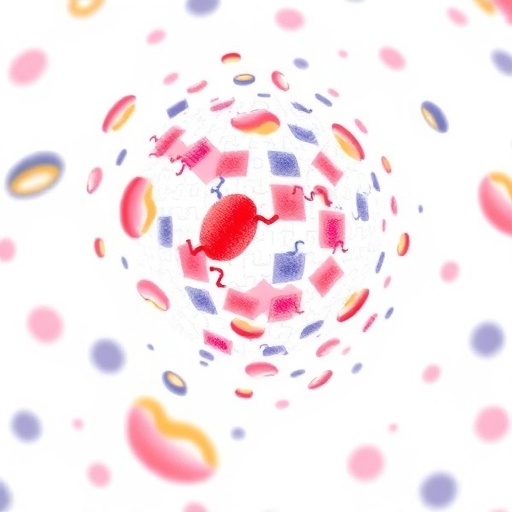In recent years, autism spectrum disorder (ASD) has remained at the forefront of neurodevelopmental research, with scientists striving to dissect the complex interplay of genetic, environmental, and neurological factors that give rise to this multifaceted condition. A groundbreaking study published in Translational Psychiatry by Kim, Lee, and colleagues offers an unprecedented glimpse into a crucial yet often underexplored aspect of ASD: sensory abnormalities. This comprehensive investigation not only delineates the sensory processing disruptions characteristic of ASD but also pioneers innovative in vitro modeling techniques that could revolutionize future therapeutic strategies.
Sensory abnormalities in individuals with autism have long been recognized as a core feature of the disorder, manifesting as hyper- or hypo-sensitivities to auditory, tactile, visual, olfactory, and gustatory stimuli. Despite being integral to the ASD phenotype, these sensory issues have historically received less attention compared to social and cognitive impairments. The urgency to unravel underlying mechanisms stems from their profound impact on daily functioning and quality of life for those affected. The current study dives deep into cellular and molecular pathways to illuminate how sensory dysregulation arises and persists in the autistic brain.
Employing advanced stem cell technologies, the research team innovatively engineered human-derived neural cultures that recapitulate sensory neuron characteristics. By differentiating induced pluripotent stem cells (iPSCs) from individuals diagnosed with ASD, they created robust in vitro models reflecting the unique sensory neuron phenotypes observed clinically. This model system allows unparalleled access to the minute biological processes involved in sensory perception—a feat not feasible with traditional animal models or purely clinical observations.
The study elucidates aberrant ion channel function and synaptic transmission within sensory neurons derived from ASD patients. These disruptions produce altered excitability and neurotransmitter release profiles, offering a plausible mechanistic basis for hypersensitivity or diminished responsiveness to environmental stimuli. Such cellular signatures align with neurophysiological data obtained from sensory testing in autistic individuals, forging a direct link between clinical phenotypes and molecular underpinnings that previously remained speculative.
Crucially, the researchers identified dysregulated signaling pathways involving calcium dynamics and neuroinflammatory markers that contribute to the maladaptive sensory responses. The amplified neuroinflammatory milieu within sensory circuits could exacerbate neuronal excitability changes, creating a vicious cycle of sensory dysfunction. This inflammation-centered hypothesis opens new therapeutic avenues targeting glial cells and immune modulators, which might recalibrate sensory processing anomalies at their origin.
The in vitro models further revealed distinctive gene expression profiles associated with sensory neuron development and plasticity in ASD-derived cells compared to neurotypical controls. Genes implicated in axonal guidance, synaptic connectivity, and neurotransmitter receptor modulation showed significant deviations, underscoring developmental trajectory differences that may predispose sensory circuits to abnormal processing. These transcriptomic insights enrich the understanding of how sensory abnormalities evolve from early neurodevelopmental stages.
Beyond molecular characterization, this study pioneers a platform for high-throughput drug screening tailored to sensory abnormalities in autism. By testing various pharmacological agents on patient-derived sensory neurons, the team demonstrated differential responsiveness that could inform personalized medicine approaches. This strategy heralds a paradigm shift, moving toward treatments that specifically target sensory dysfunction rather than global symptom suppression.
The integration of electrophysiological assays with multi-omics profiling in this research underscores a holistic approach unmatched in prior sensory studies in ASD. Such multidisciplinary convergence enables a nuanced dissection of sensory circuit biology, capturing dynamics at electrical, genetic, and proteomic levels. This comprehensive framework lays the groundwork for deciphering complex neurodevelopmental disorders beyond autism, emphasizing sensory system components often overlooked.
Moreover, the authors discuss how their findings could reshape clinical diagnostics by incorporating sensory neuron biomarkers. Early identification of sensory processing abnormalities via minimally invasive sampling of patient-derived cells or peripheral tissues may become feasible. This advance could enable earlier interventions during critical windows of neurodevelopment, potentially mitigating long-term sensory and behavioral consequences.
Importantly, the study contextualizes sensory abnormalities within the broader neurodiversity paradigm, emphasizing respect and accommodation rather than mere normalization. Therapeutic strategies developed through the in vitro models are envisioned as tools to enhance sensory integration and well-being, not eradicate intrinsic differences. This patient-centered perspective resonates deeply within the autism community, promoting inclusivity and personalized care.
While the research marks a milestone in modeling sensory abnormalities, the authors candidly acknowledge limitations. The complexity of in vivo sensory processing, influenced by multi-sensory integration and brain-wide networks, cannot be wholly captured in isolated cell cultures. Future directions include coupling in vitro models with organoid systems and in vivo validations to refine mechanistic insights and therapeutic relevance.
The implications of this work extend beyond academic intrigue; sensory abnormalities in autism critically affect education, socialization, and mental health. By illuminating biological roots and offering tangible pathways for intervention, this study promises to catalyze translational breakthroughs. Clinicians, researchers, and families stand to benefit from enhanced understanding and targeted therapies emerging from this discovery-rich platform.
In summation, the investigation by Kim, Lee, and their team embodies a transformative leap in autism research, intertwining cutting-edge stem cell technology with intricate neurobiological exploration. Their elucidation of sensory neuron dysfunction and in vitro modeling sets a new gold standard for investigating sensory abnormalities in ASD. This landmark study charts a visionary trajectory toward precision medicine for sensory processing issues that, until now, have remained enigmatic and underserved.
As the scientific community digests these findings, the excitement is palpable. Not only do they shine a light on one of autism’s most debilitating features, but they also unlock possibilities for novel interventions that resonate with the lived experiences of autistic individuals. The promise of targeted, cell-based understanding and treatment of sensory abnormalities heralds a future where sensory quirks no longer impede, but perhaps even enrich, the neurodiverse landscape.
Subject of Research: Sensory abnormalities in autism spectrum disorder and their cellular and molecular modeling in vitro.
Article Title: Sensory abnormalities in autism spectrum disorder and their in vitro modeling.
Article References:
Kim, T., Lee, J., Lee, J. et al. Sensory abnormalities in autism spectrum disorder and their in vitro modeling. Transl Psychiatry (2025). https://doi.org/10.1038/s41398-025-03778-6
Image Credits: AI Generated




